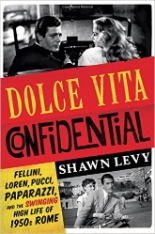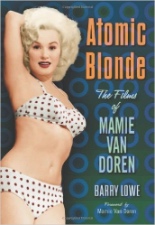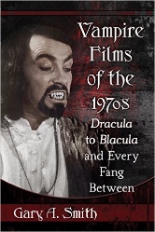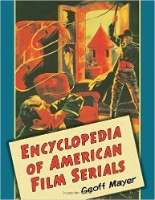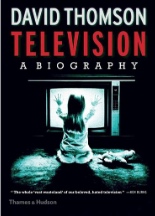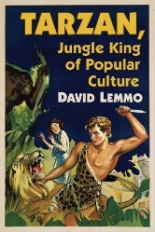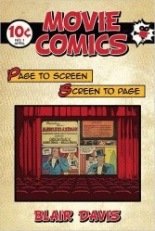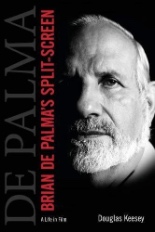 Jake Paltrow and Noah Baumbach’s 2016 documentary, De Palma, stands among my 10 favorite films of last year, with my only criticism being that it stops after 93 minutes. Anyone else who was left wanting more (and more and more) may find that itch somewhat scratched by Douglas Keesey’s Brian De Palma’s Split-Screen: A Life in Film. New in paperback from University Press of Mississippi, the book more or less takes the same tack of chronologically examining each of the filmmaker’s features — but here in more detail and from a perspective that is not the filmmaker’s own. A critical piece of Keesey’s thesis is examining how much of De Palma’s recurring themes — such as the ever-controversial merging of sexy women and graphic violence (Body Double and Dressed to Kill in particular) — is ingrained in the man’s own DNA. While he may lack in the behind-the-scenes dish, Keesey overflows with insight and ideas. The result is a close cousin of a Criterion commentary track, flooding your mind with a greater understanding and forcing you to see the films in a whole new light. Regardless of what De Palma might think of this book, I think it’s tops.
Jake Paltrow and Noah Baumbach’s 2016 documentary, De Palma, stands among my 10 favorite films of last year, with my only criticism being that it stops after 93 minutes. Anyone else who was left wanting more (and more and more) may find that itch somewhat scratched by Douglas Keesey’s Brian De Palma’s Split-Screen: A Life in Film. New in paperback from University Press of Mississippi, the book more or less takes the same tack of chronologically examining each of the filmmaker’s features — but here in more detail and from a perspective that is not the filmmaker’s own. A critical piece of Keesey’s thesis is examining how much of De Palma’s recurring themes — such as the ever-controversial merging of sexy women and graphic violence (Body Double and Dressed to Kill in particular) — is ingrained in the man’s own DNA. While he may lack in the behind-the-scenes dish, Keesey overflows with insight and ideas. The result is a close cousin of a Criterion commentary track, flooding your mind with a greater understanding and forcing you to see the films in a whole new light. Regardless of what De Palma might think of this book, I think it’s tops.
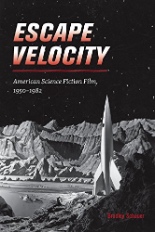 Take one look at Escape Velocity: American Science Fiction Film, 1950–1982 and you might sigh heavily and think, “Really? Another history of sci-fi movies?” Well, yes, but also no. For this Wesleyan University Press paperback, film professor Bradley Schauer does indeed take the reader on a fantastic voyage through sci-fi’s cinematic life, but more importantly fueled with cultural and economic perspectives, rather than merely the historical. Starting with the genre’s first recognition as such by studio powers and ending with its box-office apex of Best Picture nominee E.T.: The Extra-Terrestrial, the author covers ground swiftly yet smartly. Terrific design aside, what makes Escape Velocity so worthy of your time is the attention Schauer pays to such avenues of interest similar studies ignore: the value of camp, the infusion of politics, the rise and function of fanzines as film criticism, and the Star Wars-ization of blockbusters, more present today than ever.
Take one look at Escape Velocity: American Science Fiction Film, 1950–1982 and you might sigh heavily and think, “Really? Another history of sci-fi movies?” Well, yes, but also no. For this Wesleyan University Press paperback, film professor Bradley Schauer does indeed take the reader on a fantastic voyage through sci-fi’s cinematic life, but more importantly fueled with cultural and economic perspectives, rather than merely the historical. Starting with the genre’s first recognition as such by studio powers and ending with its box-office apex of Best Picture nominee E.T.: The Extra-Terrestrial, the author covers ground swiftly yet smartly. Terrific design aside, what makes Escape Velocity so worthy of your time is the attention Schauer pays to such avenues of interest similar studies ignore: the value of camp, the infusion of politics, the rise and function of fanzines as film criticism, and the Star Wars-ization of blockbusters, more present today than ever.
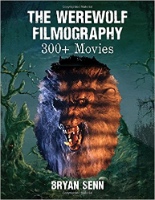 Those who read Bryan Senn’s 2013 book, The Most Dangerous Cinema: People Hunting People on Film, will not be surprised at the sheer scope of his latest (and arguably greatest), The Werewolf Filmography: 300+ Films. Although far from the only text on the subject, it is hands (paws?) down the most complete and comprehensive to date, placing it well ahead of the pack. For each of the many, many movies covered, Senn reviews it in authoritative detail and with a healthy sense of humor — the latter primarily in lycanthropic descriptions, such as the “cross between a schnauzer and Fozzie Bear” in 1969’s Dracula (the Dirty Old Man). Every werewolf movie you could possibly think of is here, plus ones the average Joe Moviegoer is not likely to have been exposed to, including the rockin’ Werewolf of Woodstock; the clip comedy President Wolfman and the Paul Naschy/Fred Olen Ray sexploitation pairing, The Unliving. (See Senn’s recent Guest List for Flick Attack for seven unsung gems.) While valuable as a reference work, the McFarland & Company hardback is an absolute pleasure to read page by page, all 400-plus of them. The only thing I can hold against it is getting me interested in all those crazy Howling sequels. —Rod Lott
Those who read Bryan Senn’s 2013 book, The Most Dangerous Cinema: People Hunting People on Film, will not be surprised at the sheer scope of his latest (and arguably greatest), The Werewolf Filmography: 300+ Films. Although far from the only text on the subject, it is hands (paws?) down the most complete and comprehensive to date, placing it well ahead of the pack. For each of the many, many movies covered, Senn reviews it in authoritative detail and with a healthy sense of humor — the latter primarily in lycanthropic descriptions, such as the “cross between a schnauzer and Fozzie Bear” in 1969’s Dracula (the Dirty Old Man). Every werewolf movie you could possibly think of is here, plus ones the average Joe Moviegoer is not likely to have been exposed to, including the rockin’ Werewolf of Woodstock; the clip comedy President Wolfman and the Paul Naschy/Fred Olen Ray sexploitation pairing, The Unliving. (See Senn’s recent Guest List for Flick Attack for seven unsung gems.) While valuable as a reference work, the McFarland & Company hardback is an absolute pleasure to read page by page, all 400-plus of them. The only thing I can hold against it is getting me interested in all those crazy Howling sequels. —Rod Lott

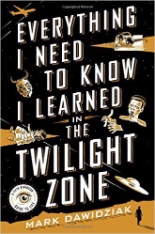
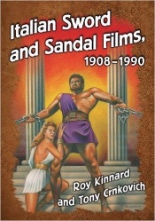 By the power of Zeus,
By the power of Zeus, 